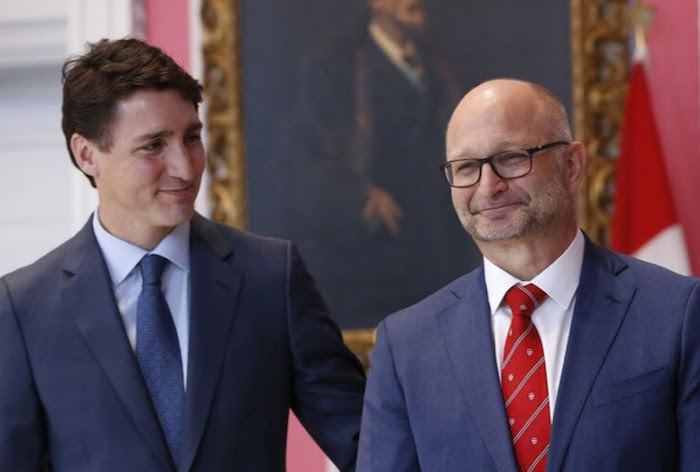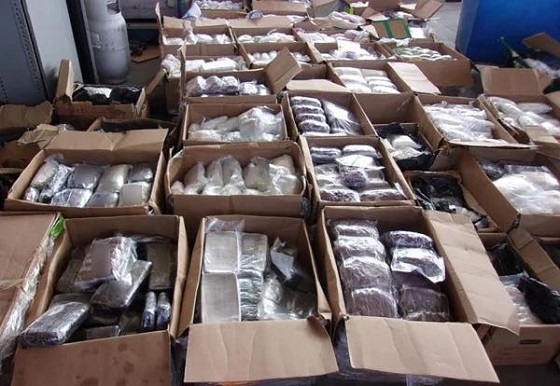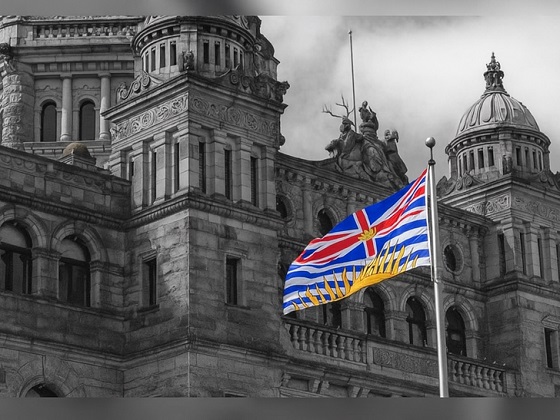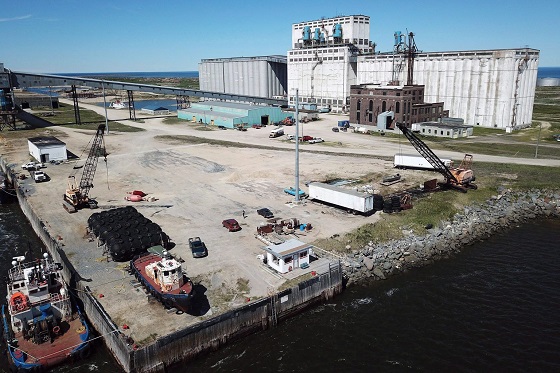Frontier Centre for Public Policy
“Indian Industry” cronyism

From the Frontier Centre for Public Policy
So, if the huge marginalized and dependent indigenous underclass does not benefit from all that money that changes hands inside the Indian Industry who is benefiting?
Former Justice Minister David Lametti’s departure from government and immediate acceptance into an expensive law firm that makes millions from indigenous issues is a recent example of what has long been called “The Indian Industry” at work.
It is unknown who first coined the term “The Indian Industry.” Many indigenous and non-indigenous writers have used the term over the decades. Indigenous author, Calvin Helin made liberal use of the term in “Dances With Dependency” as did Cree writer, Harold Johnson, in “Firewater- How Alcohol is Killing My People”
However, it was Frances Widdowson and Albert Howard’s important 2009 book “Disrobing The Aboriginal Industry” that first examined the Indian Industry in detail.
The authors chose to use the term “Aboriginal Industry”, perhaps for reasons of politeness, but they are describing the Indian Industry. They tell in detail how extensive it has become in Canada. Entire universities, law firms and virtually all Canadian institutions have become largely dependent on the money sloshing around within it. Almost all of that money comes in one way or another from taxpayers.
But they note the supreme irony that the Indian Industry is not improving the lot of the very people it is supposed to be helping – Canada’s marginalized and dependent indigenous underclass:
“Despite the billions of dollars devoted to aboriginal causes, Native people in Canada continue to suffer all the symptoms of a marginalized existence – high rates of substance abuse, violence, poverty. Disrobing the Aboriginal Industry argues that the policies proposed to address these problems – land claims and self government – are in fact contributing to their entrenchment.”
However, “Disrobing” was written in 2009, and since the Trudeau Liberals took over in 2015 the money flowing into the Indian Industry has increased dramatically in volume. In fact, that money flow, and the enormous indigenous contingent liabilities that now total $76,000,000,000 are growing so quickly – seven times higher since Trudeau took over – that the parliamentary budget officer has raised the alarm. Canada’s economic future is being compromised.
It isn’t only indigenous contingent liabilities – money owed for indigenous claims – that have grown so alarmingly, it is all indigenous spending. Reports from the Fraser Institute keep track of the shocking increases in total indigenous spending since the Trudeau Liberals took power. It is fair to say that the truly frightening federal government deficits in recent years occurred largely because of this extra indigenous spending.
And it isn’t only the largesse of the Trudeau government that has dumped money into the Indian Industry. Since 2015 it has also been the residential school bonanza. Clever lobbyists have been able to extract tens of billions of dollars from taxpayers by making highly exaggerated claims that residential schools were places of horror, where priests tortured, murdered and secretly buried thousands of indigenous children. These claims are nonsense. Although it is completely true that the residential school system was deeply flawed, and that many indigenous children were badly hurt by their residential school experience, it is also true that many received educations they would otherwise have been denied. But, more to the point, there is no evidence that even one child was murdered, or secretly buried during the entire history of residential schools. Despite that, baseless claims of clandestine deaths and secret burials have worked very well for everyone involved in the Indian Industry. Residential schools have become the Indian Industry’s single biggest money earner.
But, as Widdowson and Howard noted years ago, the Indian Industry has done nothing to solve what has always been called Canada’s “Indian problem” – namely that the great majority of Canada’s indigenous people remain far behind the mainstream on every social indicator. They are the least healthy, worst educated, most incarcerated, shortest living of any demographic by far.
They were that way before 2015, and they remain that way now. The Indian Industry, and the astounding amounts of money poured into it since 2015 haven’t changed those depressing numbers one bit.
A recent CBC investigative report on the dismal conditions at the St. Theresa Point reserve in Manitoba is a case in point. It is one of Canada’s hundreds of totally dependent reserves. Families there of as many as 23 people per house live in dilapidated housing, in a community that is almost totally unemployed and dependent. The increased money flow since 2015 appears to have only made dependency and all of its related problems – addiction, crime, domestic violence – worse.
So, if the huge marginalized and dependent indigenous underclass does not benefit from all that money that changes hands inside the Indian Industry who is benefiting?
It is people like David Lametti and Perry Bellegarde, and their law firms, universities, etc. – none of whom need special help.
And here is the second irony: The Indian Industry feeds on the human misery on display at communities like St. Theresa Point.
It needs that misery to continue to keep the money flowing.
This is not to suggest that any of the people and institutions that are part of it are deliberately perpetuating poverty, or doing anything illegal. They aren’t. They are simply picking up all of the free money our elected representatives and courts throw into the Indian Industry every day. They pick it up because we put it there.
It is probably not fair to single out David Lametti and Perry Bellegarde for their participation in this obscene waste of taxpayer money that is the Indian Industry. They are just two of many enterprising such people who have come before them, and many who will come after them. They probably convince themselves that they are doing something useful. They aren’t. They are part of an Indian Industry that fleeces taxpayers, while pretending to be solving the indigenous underclass problem, while making it worse. At a certain point, will Canadians grow tired of this game?
Because it has become abundantly clear that the federal indigenous policy that has developed over decades is a total failure. While privileged indigenous people who don’t need special attention are benefitting spectacularly, the indigenous people who do need the help are becoming more helpless and dependent all the time. The huge increase in the money dumped into uneconomic communities, like St. Theresa Point, is making things worse, not better. It is keeping young people, who should be moving to job centres, trapped in hopeless communities.
Renowned American economist and philosopher Thomas Sowell argues convincingly that simply giving money to chronically dependent people makes things worse, not better. I’m sure that Mr. Lametti and Mr. Bellegarde don’t want that to happen, but it is. And it is the Indian Industry that is making them wealthy that is doing it.
At some point the entire Indian Industry, with its racist Indian Act and brutal reserve system, will come to an end. Indigenous people living on Indian reserves now comprise only 1% of the Canadian population. Despite high birth rates on reserves, more and more reserve residents are moving away from them. By most measures only 25-40% of status Indians now live on reserves, and that percentage steadily falls.
Meanwhile, immigrants are steadily flowing into Canada. According to some estimates, Canada might have a population of 100 million by the end of the century. The percentage of the population living on reserves will become far less than 1%. Maintaining a completely separate system and bureaucracy for one tiny segment of the population will make less and less sense – especially to those millions of new Canadians, who don’t feel that they owe any special debt to indigenous people.
But while this natural process works itself out, the Indian Industry, now armed with the deeply divisive United Nations Declaration on the Rights of Indigenous Peoples (UNDRIP), is doing permanent damage to the country. We see that process now playing out in British Columbia, where their provincial version of UNDRIP- DRIPA – is wreaking havoc on their natural resources industry. It has become not only a virtual indigenous veto on any mining, pipeline or development project, it is now directly threatening basic landowner rights. In what is much like Chicago during the days of the Mafia, indigenous leaders all demand their “cut” before any project can proceed. This harmful process is spreading all across Canada, now that Canada has foolishly adopted UNDRIP.
And, in what is a perfect illustration of how the Indian Industry works, Perry Bellegard, as AFN Grand Chief, lobbied the government to bring in UNDRIP, David Lamerti, as Justice Minister, brought it in, and now Bellegrde and Lametti and their law firm benefit from it financially. Meanwhile, the taxpayer pays, and the marginalized and dependent indigenous majority remains marginalized and dependent.
Isn’t it time to end this farce? People who need education, and assistance to move to job centres should get that help. But pretending that making privileged people like David Lametti and Perry Bellegarde wealthier by dumping endless amounts of cash into Indian Industry cronyism is somehow good for indigenous people is nuts.
It isn’t. It’s bad for them, and it’s bad for Canada.
Brian Giesbrecht, retired judge, is a Senior Fellow at the Frontier Centre for Public Policy.
Crime
How Global Organized Crime Took Root In Canada

From the Frontier Centre for Public Policy
Weak oversight and fragmented enforcement are enabling criminal networks to undermine Canada’s economy and security, requiring a national-security-level response to dismantle these systems
A massive drug bust reveals how organized crime has turned Canada into a source of illicit narcotics production
Canada is no longer just a victim of the global drug trade—it’s becoming a source. The country’s growing role in narcotics production exposes deep systemic weaknesses in oversight and enforcement that are allowing organized crime to take root and threaten our economy and security.
Police in Edmonton recently seized more than 60,000 opium poppy plants from a northeast property, one of the largest domestic narcotics cultivation operations in Canadian history. It’s part of a growing pattern of domestic production once thought limited to other regions of the world.
This wasn’t a small experiment; it was proof that organized crime now feels confident operating inside Canada.
Transnational crime groups don’t gamble on crops of this scale unless they know their systems are solid. You don’t plant 60,000 poppies without confidence in your logistics, your financing and your buyers. The ability to cultivate, harvest and quietly move that volume of product points to a level of organization that should deeply concern policymakers. An operation like this needs more than a field; it reflects the convergence of agriculture, organized crime and money laundering within Canada’s borders.
The uncomfortable truth is that Canada has become a source country for illicit narcotics rather than merely a consumer or transit point. Fentanyl precursors (the chemical ingredients used to make the synthetic opioid) arrive from abroad, are synthesized domestically and are exported south into the United States. Now, with opium cultivation joining the picture, that same capability is extending to traditional narcotics production.
Criminal networks exploit weak regulatory oversight, land-use gaps and fragmented enforcement, often allowing them to operate in plain sight. These groups are not only producing narcotics but are also embedding themselves within legitimate economic systems.
This isn’t just crime; it’s the slow undermining of Canada’s legitimate economy. Illicit capital flows can distort real estate markets, agricultural valuations and financial transparency. The result is a slow erosion of lawful commerce, replaced by parallel economies that profit from addiction, money laundering and corruption. Those forces don’t just damage national stability—they drive up housing costs, strain health care and undermine trust in Canada’s institutions.
Canada’s enforcement response remains largely reactive, with prosecutions risk-averse and sentencing inadequate as a deterrent. At the same time, threat networks operate with impunity and move seamlessly across the supply chain.
The Edmonton seizure should therefore be read as more than a local success story. It is evidence that criminal enterprise now operates with strategic depth inside Canada. The same confidence that sustains fentanyl synthesis and cocaine importation is now manifesting in agricultural narcotics production. This evolution elevates Canada from passive victim to active threat within the global illicit economy.
Reversing this dynamic requires a fundamental shift in thinking. Organized crime is a matter of national security. That means going beyond raids and arrests toward strategic disruption: tracking illicit finance, dismantling logistical networks that enable these operations and forging robust intelligence partnerships across jurisdictions and agencies.
It’s not about symptoms; it’s about knocking down the systems that sustain this criminal enterprise operating inside Canada.
If we keep seeing narcotics enforcement as a public safety issue instead of a warning of systemic corruption, Canada’s transformation into a threat nation will be complete. Not because of what we import but because of what we now produce.
Scott A. McGregor is a senior fellow with the Frontier Centre for Public Policy and managing partner of Close Hold Intelligence Consulting Ltd.
Frontier Centre for Public Policy
Richmond Mayor Warns Property Owners That The Cowichan Case Puts Their Titles At Risk

From the Frontier Centre for Public Policy
“For those whose property is in the area outlined in black, the court has declared Aboriginal title to your property which may compromise the status and validity of your ownership — this was mandated without any prior notice to the landowners,” said the letter to Richmond residents.
These are the words of the mayor of Richmond, BC, to Richmond property owners. In a Canadian first — and what might be the first of many such warnings to frightened property owners — the mayor is telling them that the titles to homes and businesses that they had purchased by dint of hard work and faithfully making mortgage payments over decades might be invalidated because an indigenous claimant, relying in part on ancient hearsay evidence, managed to convince a judge that equally ancient ancestors had once built crude structures and fished there.
The warning comes because of the Cowichan case.
In an alarming decision, a judge granted 2,000 Cowichan claimants Aboriginal title (AT) to part of the City of Richmond — worth an estimated $100 billion, or about $12.5 million per claimant. The decision is being appealed. However, it is based on the equally alarming case of Delgamuukw and the line of cases that followed it. Consequently, unless the Supreme Court of Canada (SCC) is prepared to reverse that decision, Canadian property owners can never again enjoy the certainty of property ownership that was bequeathed to us before Canada even became a nation. At best, Canadian property owners can only hope that their “junior” property rights will not come under attack by someone claiming a “senior” constitutionally protected AT, based on something that might or might not have happened before Canada even became a nation.
Because the 1997 Delgamuukw decision changed property rights forever in Canada. Senior Ontario lawyer, Peter Best, describes what the SCC did in that case as a “revolution.”
Another way to describe what the unelected SCC Justices chose to do in 1997 is that they chose to sacrifice the certainty of Canadian property rights on the altar of “reconciliation.” From that point on, a Canadian property owner could no longer be certain that their title to property was permanent.
Henceforth, if an indigenous claimant, relying on ancient hearsay evidence no less, could satisfy a judge that their ancestors had the exclusive use of hunting or fishing lands in the distant past, an AT could be placed upon the title of a property owner today. In short, the property owner would be told that their “title” was not the permanent ownership they thought it was.
Few Canadians noticed this astounding decision, in large part because it concerned lands in a remote area of BC. But when the Delgamuukw-based Cowichan decision, which involved city land, was announced, property owners certainly took notice. They suddenly woke up to find that their property rights could be taken from them at the stroke of a judge’s pen.
They aren’t imagining the threat. In fact, they are alarmed to find themselves alone, fighting against a provincial government, a federal government, and the courts — all of which appear to be willing to sacrifice Canadians’ property rights to the apparent requirements of “reconciliation.”
Here’s an example. These Pender Harbour residents are not just alarmed. They are scared.
This brief article discusses the threat and what went wrong.
Those who live in dictatorships and own property can never be certain that homes and businesses they worked hard to buy won’t be suddenly taken from them. That’s exactly what happened in Cuba in 1959, when Fidel Castro seized power from Fulgencio Batista. I was reminded of this the other day when I rewatched Francis Ford Coppola’s masterful movie, Godfather II, and saw that revolution depicted on the screen.
Pandemonium reigned as most of Cuba’s once vibrant middle class was forced out of their own country. Their houses and businesses were simply confiscated by the Castro “revolutionaries.” Families who had acquired property by dint of generations of hard work suddenly found themselves with nothing. While many of the dispossessed rebuilt good lives in Miami and elsewhere, they will never regain their haciendas and businesses back home. The sad mess that is today’s Cuba is what a country, stripped of its middle class and property rights, looks like. That’s because the certainty of property rights is the backbone of any successful nation.
But none of what happened in Cuba could happen in a liberal democracy, like Canada, could it? We Canadians have always been sure that if we do all of the work and saving necessary to earn the down payment needed to buy a house; work hard to meet our mortgage, property taxes, and other fees; and spend the money necessary to maintain our property over the years — we will own “our” property forever. We can sell it, pass it on to our children, or live there until we die. Property ownership is forever in a country like Canada. No one — not even the government or the courts — can take it away from us. Right?
At least that’s what we thought. If you are one of those Canadians who still think that “ownership” means what you think it means, you need to start paying attention to what is playing out right now in British Columbia. Because the Cowichan case — directly based on Delgumuukw — decides otherwise. The trial judge concluded that property rights can indeed be taken away from a rightful owner. A court can do that — on a claim based on hearsay evidence, no less. And not just hearsay evidence. Hearsay evidence that is seventh generation hearsay. In one fell swoop, Canada became the first (and only) common law nation where a court can take away your title to your property based on a claim by someone in 2025 that a claimed ancestor of theirs told someone else something in 1846. But only if all the “someones” are indigenous.
Cowichan claimants convinced a judge that what some claimed ancient ancestor told another ancient ancestor in a blueberry patch, and all the way up to the present, was reliable enough to slap a constitutionally senior AT on top of the inferior “junior title” that everyone who had lawfully acquired the property from the previous owner thought they owned. So, if you own property in Richmond, BC, you are not being paranoid if you are alarmed by the decision. The mayor is quite right to warn scared residents that their titles are under threat.
And if you are a property owner — or rather thought you were a property owner — anywhere in what were formerly the Queen Charlotte Islands, but has now suddenly become the new nation, or tribal nation, of Haida Gwaii, you might also want to know that an indigenous claimant and their lawyers can meet with one judge in private — with absolutely no notice to you — and have their newly acquired AT — courtesy of the courts and the Eby government — made into a constitutional right that is now “senior” to your “junior” unprotected right that you thought was your inviolable title to your property. A title that might have taken a lifetime of work to acquire.
So, if you are a BC resident, you should be alarmed. And what starts in BC doesn’t necessarily stay in BC. It is assumed by many that AT will have no effect in the areas of Canada covered by treaties. However, the signing of those treaties only started in 1870. What about tribes, such as the Assiniboine, who had been displaced by treaty signing tribes, such as the Ojibway, before 1870? This and other creative AT claims will undoubtedly be argued before judges as receptive to radical indigenous claims as the Cowichan trial judge.
This is obviously a simplified description of a very complicated topic. Volumes have been written by lawyers and others about the Delgamuukw case where AT and the line of cases built on it originated. Brilliant lawyers, like Dwight Newman, Geoffrey Moyse, Barry Kirkham, and Peter Best, as well as many writers, have already written reams about the Cowichan case.
But don’t be fooled by politicians or Indian chiefs telling you that they are not claiming private property at this time.
Because if their claims are accepted, that means the government had a defective title from the outset, that means your title is just as defective. They can go after your title any time they care to. As mentioned, the City of Richmond is warning residents that the Cowichan case puts their ownership in doubt. They are not being paranoid — they are letting residents know the truth — the courts are playing fast and loose with property rights in their single-minded pursuit of “reconciliation.”
Richmond and Haida Gwaii are most likely just the beginning of what is going to happen throughout BC, and eventually all of Canada. BC has hundreds of Indian bands that all want variations of what has been awarded to the Cowichan band in the Cowichan case, and to the Haida, by the double-teaming of the Eby government and our courts. This appears to be “Land back” at work. The Eby government and BC courts now appear to be actively working together — engineering “constitutional” declarations privately, for example — in the dismantling of rights to private property to fit their vision of reconciliation. Here is an article on the subject by the David Suzuki Foundation. To them, it makes perfect sense that huge parts of Canada should simply be “handed back” to claimants, simply because they are indigenous. The Eby government, with the courts’ cooperation, appears to be doing exactly that.
As mentioned, it all began with the Delgamuukw case in 1997 — decided by a SC determined to put “reconciliation” ahead of every other consideration. That is the case that decided — against all logic, common sense, and case law that had been built up for a thousand years — that ancient hearsay evidence can be reliable enough to remove title from a property owner and give it to an indigenous claimant. And that indigenous hearsay evidence is somehow reliable, while all other hearsay is not.
To quote senior BC lawyer, Barry Kirkham:
“In the entire history of the common law first hand hearsay evidence is deemed inadmissible because hearsay is unreliable. Delgamuukw held that in support of a claim for Aboriginal title, the courts must allow Indian witnesses to give seventh generation hearsay evidence to establish facts as to land they occupied in 1846. There is no basis in law, logic, or justice to justify this astounding claim, and there is no reason why hearsay evidence from Indians should be an exception to a rule that governs every other litigant. The SC justified this singular exception to the rule against hearsay evidence by reasoning, “There is no other means by which the Indians can prove their case.” A clear instance of a court inventing a rule to produce a particular result, which is the exact opposite of what a court should be doing and is doing in virtually all other cases.”
So, how can seventh generation indigenous hearsay be reliable when even first generation non-indigenous hearsay is considered inadmissible because it is unreliable?
The answer is clear: It can’t be.
To Kirkham again:
“The Indians had no written language and created no documents or records and had no formal education system. How can hearsay evidence from such a system be so much more reliable than non-Indian hearsay, which is inadmissible, despite facts being recorded in documents and taught through a highly developed educational system, where students are a captive audience for several hours a day for many years.”
The truth is that indigenous oral histories are no more or less reliable than the oral history of any other pre-literate people. There might have been a Moses, who led his people from ancient Egypt. Perhaps there was something that happened at the Red Sea that helped them escape. But any judge who stripped a property owner of their titles in 2025, based on their belief that Moses parted the Red Sea that day, would be considered quite mad. Similarly, anyone who believes that every detail of a story supposedly told in a blueberry patch long before Canada even became a country can be accurately recounted by a self-interested claimant today many generations later is deluded.
Proof of what I am saying can be found in the Cowichan case itself. The Cowichan claimants recited their oral history in court, but so did the two opposing tribes, the Musqueam and Tsawwassen. Not surprisingly, all three oral histories differed. All three favoured the groups claiming them to be true. Of course, they did. It was “their” oral history. There is simply no such thing as an oral history, or fable, that doesn’t favour the group that believes it.
The Cowichan trial judge made the arbitrary decision that the Cowichan oral history was accurate, and the two other conflicting indigenous oral histories were not accurate. The correct decision was to find that none of the oral histories were reliable enough to decide something as precise as title.
That’s because oral histories — including indigenous oral histories — are inherently unreliable. They are just stories that have been told and retold — and subtly changed with each retelling. The fact that they are told by indigenous people is neither here nor there.
In both Delgamuukw and Cowichan, we see judges trying to rectify what they see as historical errors made by our forefathers. While these instincts might be well-intentioned, the fact is that remaking Canada is not the courts’ job. Elected representatives and/or constitutional discussions might remedy these perceived injustices, but playing fast and loose with both the clear rules of evidence and what is supposed to be the certainty of property rights are clear examples of judicial overreach.
This problem of judicial overreach is made exponentially worse by the fact that some of the most expensive law firms in the country are actively working on these AT and “duty to consult” claims all across the country. Perversely, the enormous fees come from the very property owners — the taxpayers — targeted by these increasingly creative legal claims.
Many of the very lawyers doing this work eventually become judges hearing those claims. This unholy alliance of chiefs, lawyers, and activist judges is rapidly depleting Canada’s embattled treasury and destabilizing the country. All this is made worse by crusading politicians, like former Prime Minister Justin Trudeau and Premier David Eby.
Attempting to appease the unappeasable 1-2% of the Canadian population who live on Indian reserves by impoverishing and stripping property from the productive 98% in the name of “reconciliation” is a fool’s errand. Decades of enormous public expenditure and “reconciliation” have certainly made many people rich but have done nothing to move the dependent indigenous underclass up the ladder.
There are many other reasons as well why the Delgamuukw and Cowichan are wrongly decided, including the obvious fact that the concept of “title” was foreign to a warrior culture, where stronger tribes had displaced weaker tribes for thousands of years. But the decision to use seventh generation hearsay, only because it comes from indigenous claimants, is the fundamental flaw that must be corrected. The SCC has put property rights in peril and must restore the sanctity of property rights in Canada. It must fix the mess it has created.
The SCC in Delgamuukw set off the multiple claims for AT all over BC and now in other parts of Canada. It is largely responsible for starting what looks like the carving up of that province into racial enclaves, beginning with Haida Gwaii. It incentivized Indians to think of themselves first as members of their “First Nation” and only second as Canadians. In their pursuit of reconciliation, the SCC inadvertently promoted indigenous separatism — the exact opposite of what our highest court should do. And now it is putting in peril a system of property rights that originated in 1066. It would be hyperbolic to say that the justices initiated the unravelling of Canada, but a Canada without certainty of title is not a Canada worth saving. Quebec and Alberta sovereignists have taken note.
The tragedy is that none of this was supposed to happen. In 1982, when constitutional talks were underway, our senior premiers campaigned to have property rights constitutionally protected. That didn’t happen because of the intervention of NDP leaders, like Ed Broadbent, who insisted for their own ideological reasons that Section 35 (which recognizes existing Aboriginal and treaty rights) must be included, but property rights must remain out of the document.
Because originally there was no such thing as Section 35 in the original draft of what the premiers were asked to sign. It was rather suddenly inserted into the mix by some of the same clever people who managed to nix constitutionally protecting property rights.
But even then, the senior premiers, such as Alberta’s Peter Lougheed and Manitoba’s Sterling Lyon, refused to sign — fearing exactly the type of judicial activism that gave rise to Delgamuukw and Cowichan. Only when they were assured by Trudeau and Chretien personally that if the word “existing” was placed before “Aboriginal rights” future Supreme Courts would not even think of expanding aboriginal rights as they existed in 1982 did they sign.
But those senior premiers came to regret what they had done. The assurances given by Trudeau and Chretien turned out to be worthless. They had been snookered. In Delgamuukw, the SCC blatantly disregarded the clear intent of the senior premiers and invented brand new law — AT — by declaring that ancient hearsay evidence could be used by indigenous claimants to establish title to property.
But those senior premiers, like the Fathers of Confederation before them, would have been positively horrified to see what an activist SCC and feckless politicians, like Eby, are doing to the country as a whole. Carving up the country into racial enclaves, like Haida Gwaii, encouraging Indians to think of themselves as members of a tribe, instead of as Canadians, is exactly what Canada was not supposed to be. Our forefathers envisioned a Canada rid of tribalism, where everyone was equal in law, not the “patchwork of tiny Bantustans” — maybe better called UNDRIPia — that is emerging today.
It will be years before the SCC will rule on the Cowichan appeal, and hopefully do a major rethink of what their predecessors launched in 1997 with Delgamuukw. In the meantime, the uncertainty that the courts have created with AT (and their equally damaging creation — “duty to consult”) will cost Canadians dearly. The Canada that was known will continue to unravel.
But Canadians who have worked hard to buy their homes and businesses will not sit idly by while their titles are taken from them. The SCC must reverse what Peter Best calls their “revolution” or they will foment a revolution of a different kind.
Brian Giesbrecht is a retired judge and a senior fellow at the Frontier Centre for Public Policy.
-

 National2 days ago
National2 days agoPsyop-Style Campaign That Delivered Mark Carney’s Win May Extend Into Floor-Crossing Gambits and Shape China–Canada–US–Mexico Relations
-

 Energy16 hours ago
Energy16 hours agoExpanding Canadian energy production could help lower global emissions
-

 Great Reset1 day ago
Great Reset1 day agoEXCLUSIVE: The Nova Scotia RCMP Veterans’ Association IS TARGETING VETERANS with Euthanasia
-

 Daily Caller1 day ago
Daily Caller1 day agoSpreading Sedition? Media Defends Democrats Calling On Soldiers And Officers To Defy Chain Of Command
-

 Business14 hours ago
Business14 hours agoWill the Port of Churchill ever cease to be a dream?
-

 COVID-192 days ago
COVID-192 days agoCovid Cover-Ups: Excess Deaths, Vaccine Harms, and Coordinated Censorship
-

 Health2 days ago
Health2 days agoCDC’s Autism Reversal: Inside the Collapse of a 25‑Year Public Health Narrative
-

 Bruce Dowbiggin2 days ago
Bruce Dowbiggin2 days agoBurying Poilievre Is Job One In Carney’s Ottawa




